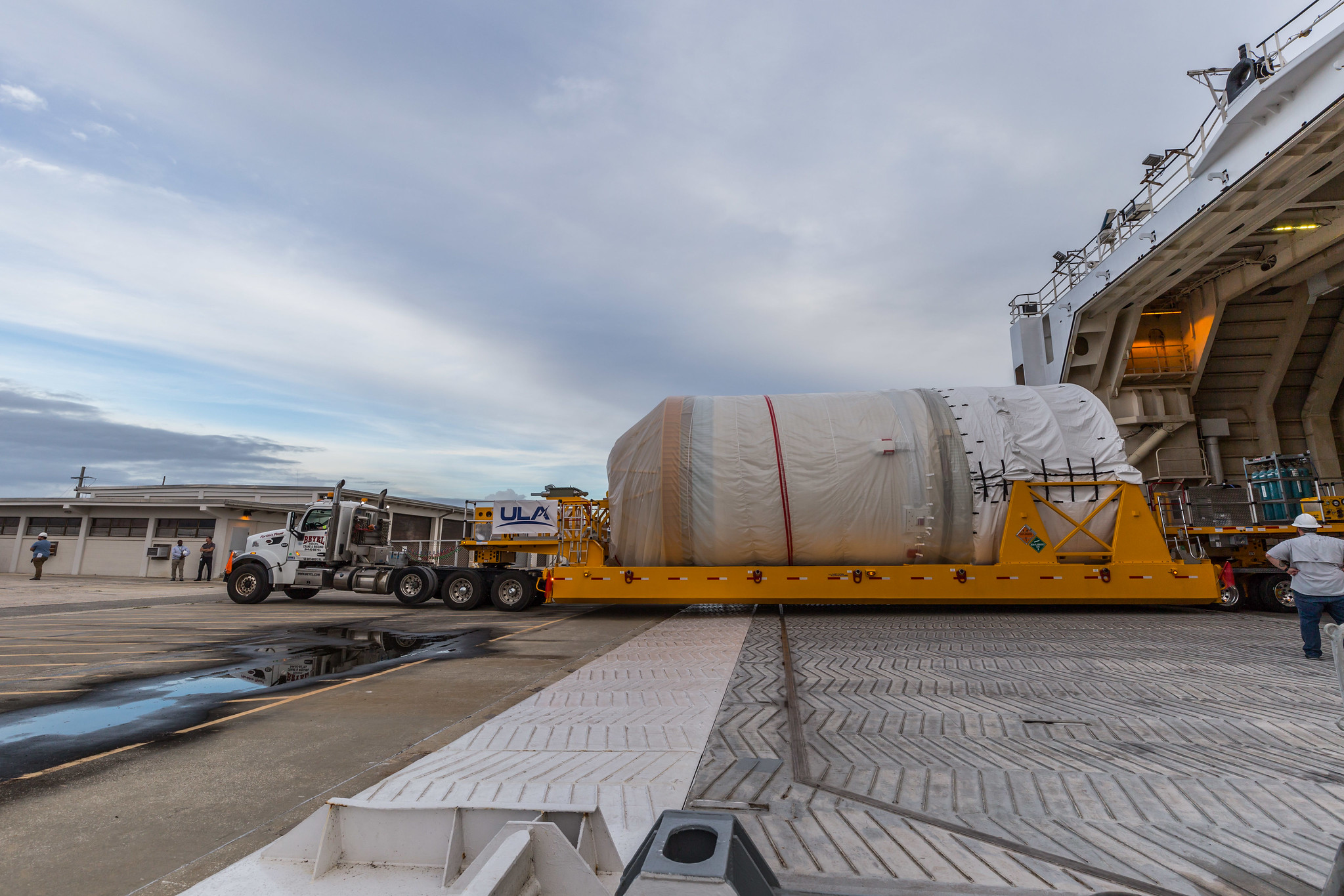ULA gearing up for first Vulcan launch

BERLIN — All the major components for the first Vulcan Centaur rocket are now at the launch site as United Launch Alliance prepares for a launch in late December.
In a call with reporters Nov. 15, ULA Chief Executive Tory Bruno said that the Centaur upper stage for that mission, called Cert-1 by the company, arrived at Cape Canaveral on Nov. 13. Workers are now preparing the stage in a facility there before installing it atop the Vulcan booster.
Once the two stages are integrated, ULA will perform another wet dress rehearsal where both stages are loaded with propellants and go through a practice countdown. “Then we will be standing by and ready to encapsulate and then integrate our spacecraft,” he said.
The primary payload for Cert-1 is Astrobotic’s Peregrine lunar lander, which is carrying payloads for NASA’s Commercial Lunar Payload Services (CLPS) program as well as several other customers. Also on the rocket is a payload from space memorial company Celestis that will remain attached to the Centaur.
Peregrine’s specific requirements, including lighting conditions at its landing site and staying in continuous contact with NASA’s Deep Space Network, drove the launch opportunities to three instantaneous windows, the first of which is Dec. 24 at 1:49 a.m. Eastern.
Two backup windows are on Dec. 25 and 26. ULA did not disclose the times of those windows in the call, but in a Nov. 14 presentation about the CLPS program to an advisory committee, NASA’s Joel Kearns said the launch windows are at 1:53 a.m. Eastern on Dec. 25 and 2:08 a.m. Eastern on Dec. 26. All three windows would set up a landing at about 3:30 a.m. Eastern Jan. 25.
Bruno said preparations are on schedule to support that launch opportunity. “We’re actually pacing a couple of days ahead of that,” he said. “Fingers crossed.”
Besides sending Peregrine on its way to the moon, ULA will test this upgraded version of the Centaur, called Centaur 5. “There will be additional maneuvers performed just to give us an opportunity to exercise the Centaur 5; really verify but mostly learn about its quirks as we go put it through its paces in preparation for missions that’ll come later.”
A success on Cert-1 would allow the second Vulcan mission, Cert-2, to launch in the first or second quarter of 2024, Bruno said. That will carry the first Dream Chaser spacecraft for Sierra Space. The rest of the manifest for 2024 is still being coordinated, but he noted that missions for Amazon’s Project Kuiper in 2024 will use the Atlas 5.
ULA plans to ramp up the Vulcan launch rate to twice a month by the end of 2025 as it works to fly off a backlog of 70 launches that he said is “pretty even” between government and commercial customers.
While Bruno discussed details about the future of Vulcan, he was more circumspect about the company’s future. He said in a Bloomberg interview in October that the company, a joint venture of Boeing and Lockheed Martin, could be an attractive acquisition target. “If I were buying a space business, I’d go look at ULA,” he said then. Another report Nov. 13 by Ars Technica said three companies, including Blue Origin, are finalists to acquire the company.
“I could never talk about or even speculate about the merger or acquisition situation,” Bruno said in the call about a potential sale of ULA. “I did say that ULA is in great shape after our transformation and our full, now many years long, presence in the commercial marketplace.”
Related
ncG1vNJzZmiroJawprrEsKpnm5%2BifLa4wGaenpminruoedSpZJ%2BnomKzqr7SrWSvrZyYrq95y5qsp5uYZA%3D%3D